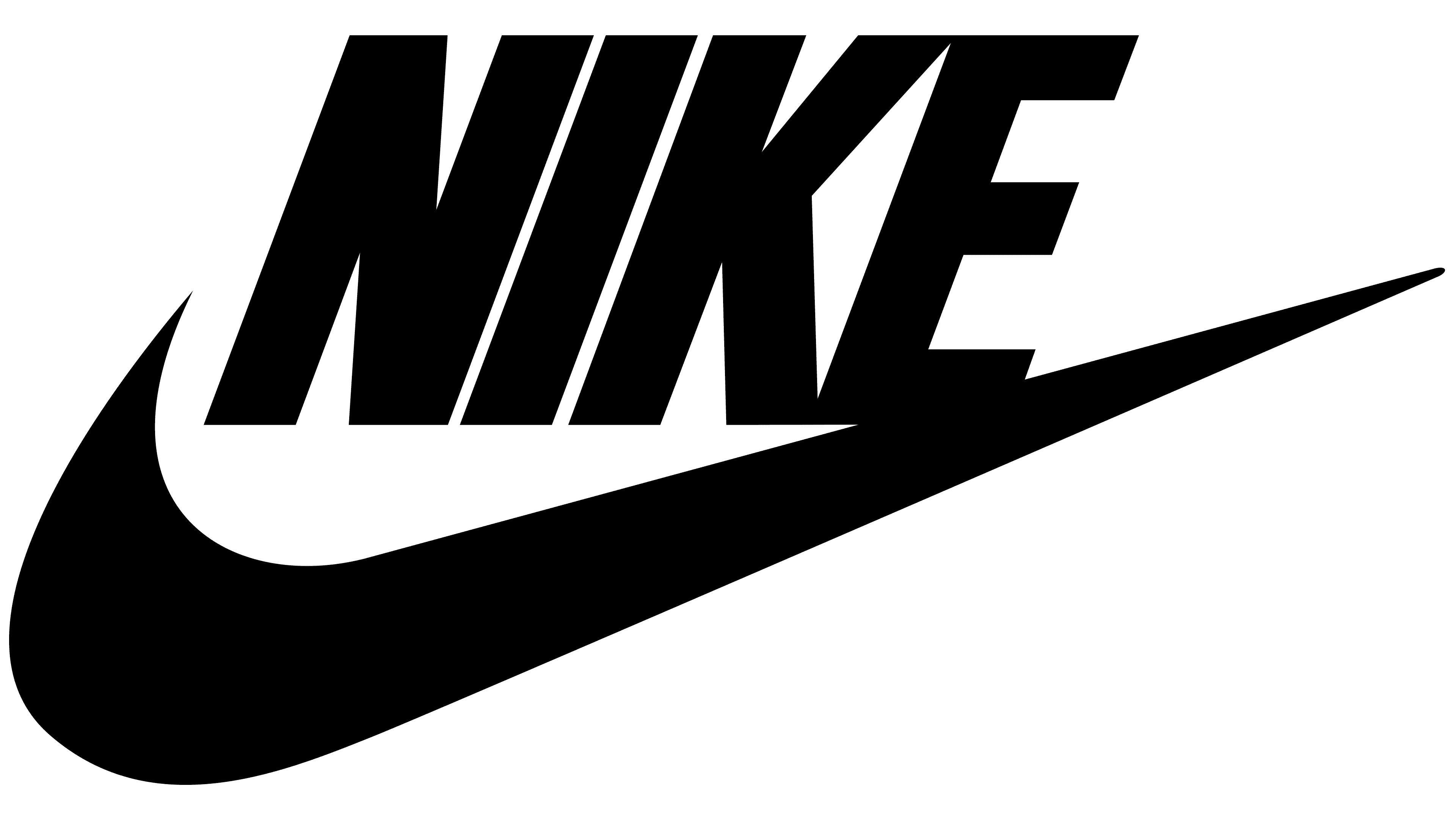Global Sustainable Footwear Market: By Type, By End User, By Region & Segmental Insights Trends and Forecast, 2024 – 2034
- Industry: Consumer Goods
- Report ID: TNR-110-1120
- Number of Pages: 420
- Table/Charts : Yes
- June, 2024
- Base Year : 2024
- No. of Companies : 10+
- No. of Countries : 29
- Views : 10240
- Covid Impact Covered: Yes
- War Impact Covered: Yes
- Formats : PDF, Excel, PPT
Sustainable footwear refers to shoes designed and produced with minimal environmental impact, prioritizing the use of eco-friendly materials, ethical manufacturing practices, and long-lasting durability. This type of footwear incorporates materials such as recycled plastics, organic cotton, plant-based leathers, and other renewable resources. The production process emphasizes reducing carbon emissions, water usage, and waste, while also ensuring fair labor practices and supporting local communities.
Sustainable footwear aims to decrease the ecological footprint of the fashion industry by promoting a circular economy, which includes recycling, upcycling, and designing for durability and repairability. Consumers choosing sustainable footwear contribute to environmental conservation and support brands that prioritize ethical and eco-conscious practices. This approach not only meets the growing demand for environmentally responsible products but also aligns with broader efforts to combat climate change and promote sustainable living.
The demand for sustainable footwear is driven by a growing consumer awareness of environmental issues and a strong preference for eco-friendly products. Shoppers are increasingly prioritizing sustainability, recognizing the environmental impact of traditional footwear manufacturing, which involves significant carbon emissions, water consumption, and waste. Advances in technology have enabled the development of high-quality, stylish shoes made from sustainable materials like recycled plastics, organic cotton, and plant-based leathers, appealing to eco-conscious consumers without compromising on design or performance.
Additionally, social media and influencers play a crucial role in promoting sustainable brands, further driving consumer interest. Regulatory pressures and corporate social responsibility initiatives also encourage brands to adopt greener practices. As consumers become more informed and proactive about their environmental footprint, the market for sustainable footwear continues to expand, supported by innovations in material science and an increasing number of brands committing to sustainable practices.
In terms of revenue, the global Sustainable Footwear market was worth US$ 8.3 Bn in 2023, anticipated to witness CAGR of 6.7% During 2024 – 2034.
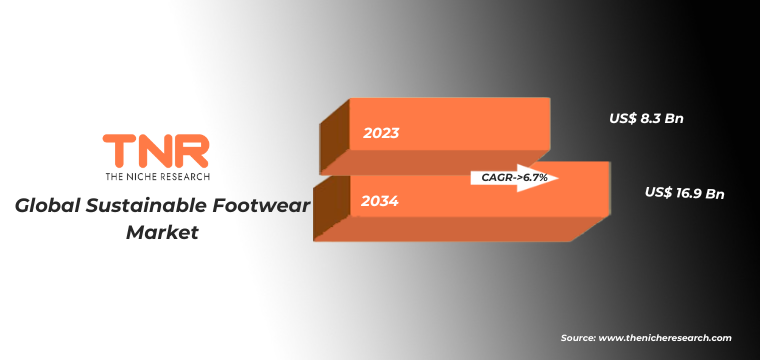
Global Sustainable Footwear Market Dynamics
Environmental Awareness and Consumer Preferences: Growing global awareness about climate change and environmental degradation is significantly influencing consumer preferences. More consumers are prioritizing eco-friendly products, including footwear, and are willing to pay a premium for sustainable options.
Technological Advancements: Innovations in materials science and manufacturing processes are making it easier and more cost-effective to produce sustainable footwear. Examples include the use of recycled plastics, biodegradable materials, and sustainable alternatives to leather such as plant-based or lab-grown leathers.
Government Regulations and Policies: Governments worldwide are implementing stricter regulations to reduce carbon emissions and encourage sustainable practices. These policies are pushing footwear companies to adopt greener production methods and materials. Brands are increasingly integrating sustainability into their business models as part of their CSR strategies. This shift is driven by both consumer demand and a growing recognition of the long-term benefits of sustainable practices for brand reputation and operational efficiency.
Cultural Shifts and Fashion Trends: The fashion industry is increasingly embracing sustainability, with influential designers and brands setting trends for eco-friendly products. This cultural shift is making sustainable footwear more fashionable and desirable. Social media platforms and influencers play a significant role in promoting sustainable fashion. They raise awareness, educate consumers, and drive demand for sustainable footwear through endorsements and content.
Supply Chain Innovations: Efficient and transparent supply chains are crucial for sustainability. Innovations in this area, such as blockchain for traceability and more efficient recycling processes, are enhancing the sustainability of footwear production. The adoption of circular economy principles, such as designing for durability, reparability, and recyclability, is becoming more common. Brands are developing take-back programs and offering repair services to extend the life cycle of their products.
Non-Athletic Segment Has Garnered Major Market Share in the Global Sustainable Footwear Market During the Forecast Period (2024 – 2034).
The demand for non-athletic sustainable footwear is driven by a convergence of environmental awareness, consumer health consciousness, and fashion trends that prioritize ethical practices. As consumers become more educated about the detrimental effects of traditional shoe manufacturing on the environment, including excessive waste, carbon emissions, and the use of harmful chemicals, there is a growing shift towards products that minimize ecological impact. Non-athletic footwear, such as casual and formal shoes, is increasingly being produced from eco-friendly materials like recycled plastics, organic cotton, and plant-based leathers, appealing to a market that values sustainability without compromising style or comfort.
Additionally, there is a heightened awareness of the health benefits associated with sustainable materials, which are often less toxic and more breathable than conventional alternatives. The rise of slow fashion also plays a significant role, with consumers seeking durable, timeless pieces that reduce the frequency of replacements and therefore, waste. Social media and digital platforms amplify this trend by showcasing sustainable brands and influencing purchasing decisions. Regulatory pressure and corporate responsibility initiatives further encourage brands to adopt sustainable practices. Together, these factors create a robust demand for non-athletic sustainable footwear, driven by a blend of environmental responsibility, health considerations, and a shift towards mindful consumption.
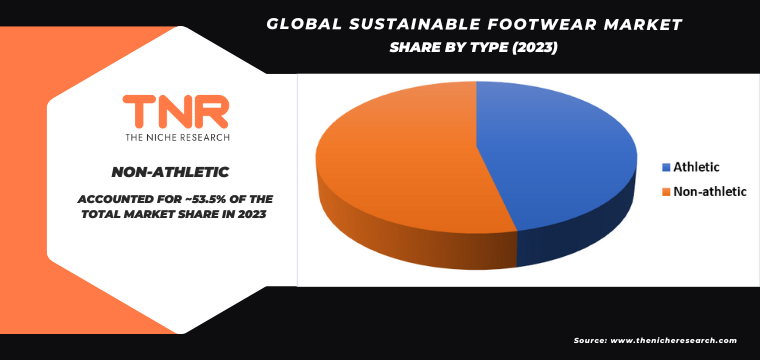
By End User Men Segment had the Highest Share in the Global Sustainable Footwear Market in 2023.
The demand for sustainable footwear among men is being driven by several key factors. Increasing environmental awareness and a growing emphasis on personal responsibility toward reducing carbon footprints are motivating men to make more eco-conscious choices, including in their footwear. This demographic is becoming more informed about the environmental impacts of traditional shoe manufacturing, such as the extensive use of non-renewable resources and the resulting waste. Furthermore, the influence of social media and digital platforms has heightened visibility of sustainable practices and brands, encouraging men to opt for products that align with their values.
Technological advancements have also played a crucial role, enabling the production of high-quality, stylish footwear from sustainable materials like recycled plastics, organic cotton, and responsibly sourced leather. This ensures that eco-friendly shoes are no longer perceived as inferior in design or durability. Additionally, the rise of athleisure and the blend of casual and professional attire has increased the demand for versatile, sustainable footwear that suits various aspects of modern lifestyles. Men are also influenced by prominent figures and athletes endorsing sustainable brands, reinforcing the trend. Overall, the combination of environmental consciousness, technological innovation, lifestyle changes, and influential endorsements is driving the growing demand for sustainable footwear among men.

By Region, Asia Pacific Dominated the Global Sustainable Footwear Market in 2023.
The demand for sustainable footwear in the Asia-Pacific region is driven by a growing awareness of environmental issues, increasing consumer preference for eco-friendly products, and the rising influence of sustainability trends across various industries. This shift is fueled by the region’s expanding middle class, which is becoming more conscientious about their purchasing decisions and the environmental impact of their consumption.
Government regulations and initiatives promoting sustainable practices are also playing a significant role, encouraging both local and international brands to adopt eco-friendly materials and production methods. Additionally, advancements in sustainable technologies and materials, such as recycled plastics and organic fabrics, are making it easier for manufacturers to meet these demands without compromising on quality or style. The region’s younger, tech-savvy population, who are active on social media, further amplifies the demand by promoting and supporting brands that align with their values. As a result, the Asia-Pacific market is witnessing a steady increase in the adoption of sustainable footwear, driven by a combination of consumer behavior, regulatory frameworks, and technological innovations.
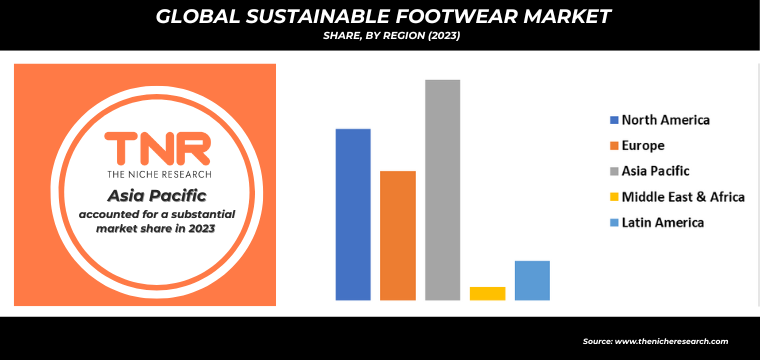
Competitive Landscape: Global Sustainable Footwear Market:
- Adidas AG
- Amour Vert, Inc
- LYMI, Inc., dba Reformation
- MATISSE FOOTWEAR
- Native Canada Footwear Ltd
- NISOLO
- Rothy’s, Inc.
- THE TROPIC FEEL, S.L.
- Threads 4 Thought
- VEJA
- Other Industry Participants
Global Sustainable Footwear Market Scope
| Report Specifications | Details |
| Market Revenue in 2023 | US$ 8.3 Bn |
| Market Size Forecast by 2034 | US$ 16.9 Bn |
| Growth Rate (CAGR) | 6.7% |
| Historic Data | 2016 – 2022 |
| Base Year for Estimation | 2023 |
| Forecast Period | 2024 – 2034 |
| Report Inclusions | Market Size & Estimates, Market Dynamics, Competitive Scenario, Trends, Growth Factors, Market Determinants, Key Investment Segmentation, Product/Service/Solutions Benchmarking |
| Segments Covered | By Type, By End User, By Region |
| Regions Covered | North America, Europe, Asia Pacific, Middle East & Africa, Latin America |
| Countries Covered | U.S., Canada, Mexico, Rest of North America, France, The UK, Spain, Germany, Italy, Nordic Countries (Denmark, Finland, Iceland, Sweden, Norway), Benelux Union (Belgium, The Netherlands, Luxembourg), Rest of Europe, China, Japan, India, New Zealand, Australia, South Korea, Southeast Asia (Indonesia, Thailand, Malaysia, Singapore, Rest of Southeast Asia), Rest of Asia Pacific, Saudi Arabia, UAE, Egypt, Kuwait, South Africa, Rest of Middle East & Africa, Brazil, Argentina, Rest of Latin America |
| Key Players | Adidas AG, Amour Vert, Inc, LYMI, Inc., dba Reformation, MATISSE FOOTWEAR, Native Canada Footwear Ltd, NISOLO, Rothy’s, Inc., THE TROPIC FEEL, S.L., Threads 4 Thought, VEJA |
| Customization Scope | Customization allows for the inclusion/modification of content pertaining to geographical regions, countries, and specific market segments. |
| Pricing & Procurement Options | Explore purchase options tailored to your specific research requirements |
| Contact Details | Consult With Our Expert
Japan (Toll-Free): +81 663-386-8111 South Korea (Toll-Free): +82-808- 703-126 Saudi Arabia (Toll-Free): +966 800-850-1643 United Kingdom: +44 753-710-5080 United States: +1 302-232-5106 E-mail: askanexpert@thenicheresearch.com
|
Global Sustainable Footwear Market
By Type
- Athletic
- Non-athletic
By End User
- Men
- Women
- Children
By Region
- North America (U.S., Canada, Mexico, Rest of North America)
- Europe (France, The UK, Spain, Germany, Italy, Nordic Countries (Denmark, Finland, Iceland, Sweden, Norway), Benelux Union (Belgium, The Netherlands, Luxembourg), Rest of Europe)
- Asia Pacific (China, Japan, India, New Zealand, Australia, South Korea, Southeast Asia (Indonesia, Thailand, Malaysia, Singapore, Rest of Southeast Asia), Rest of Asia Pacific)
- Middle East & Africa (Saudi Arabia, UAE, Egypt, Kuwait, South Africa, Rest of Middle East & Africa)
- Latin America (Brazil, Argentina, Rest of Latin America)
Report Layout:
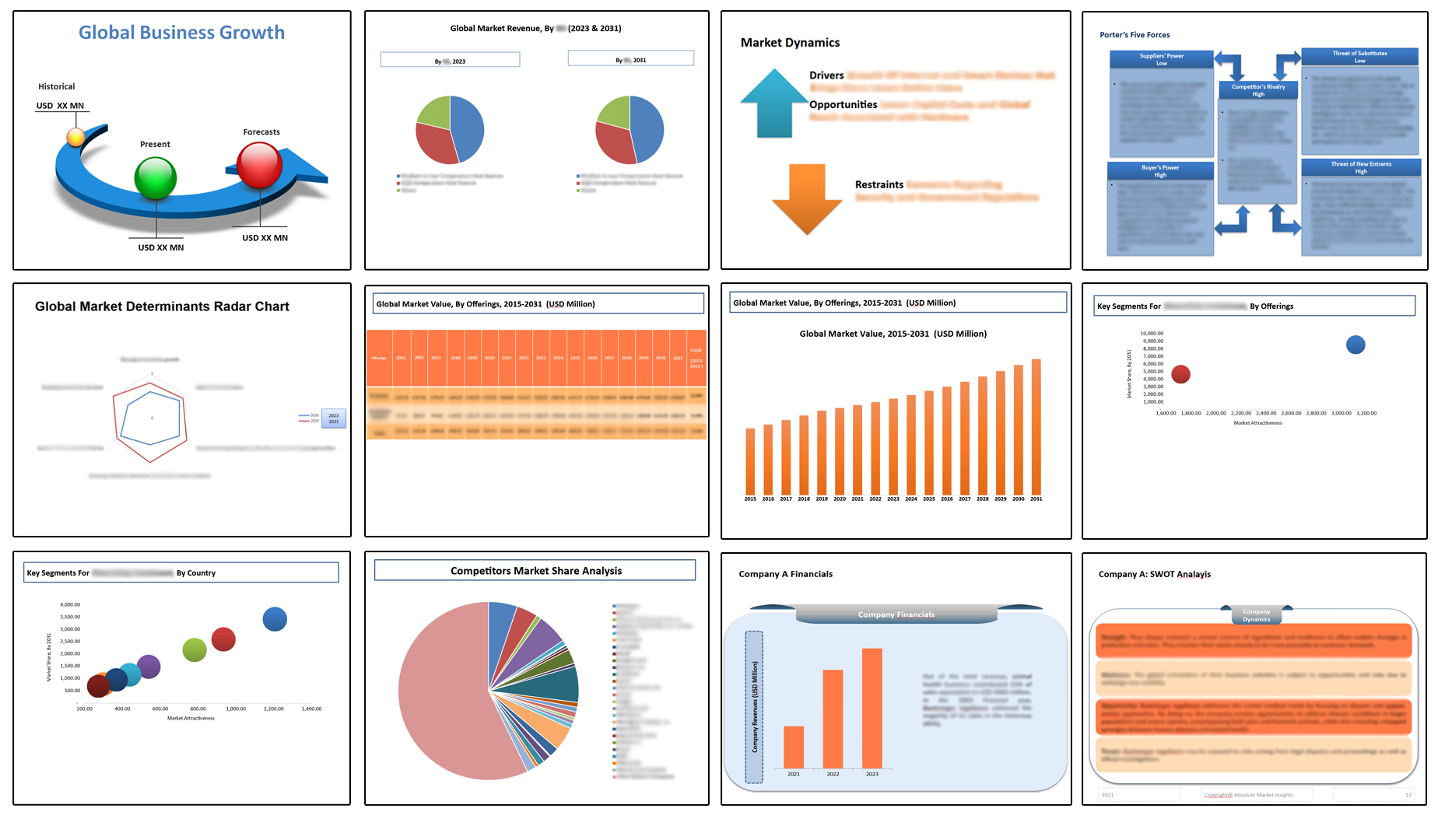
Table of Contents
Note: This ToC is tentative and can be changed according to the research study conducted during the course of report completion.
**Exclusive for Multi-User and Enterprise User.
Global Sustainable Footwear Market
By Type
- Athletic
- Non-athletic
By End User
- Men
- Women
- Children
By Region
- North America (U.S., Canada, Mexico, Rest of North America)
- Europe (France, The UK, Spain, Germany, Italy, Nordic Countries (Denmark, Finland, Iceland, Sweden, Norway), Benelux Union (Belgium, The Netherlands, Luxembourg), Rest of Europe)
- Asia Pacific (China, Japan, India, New Zealand, Australia, South Korea, Southeast Asia (Indonesia, Thailand, Malaysia, Singapore, Rest of Southeast Asia), Rest of Asia Pacific)
- Middle East & Africa (Saudi Arabia, UAE, Egypt, Kuwait, South Africa, Rest of Middle East & Africa)
- Latin America (Brazil, Argentina, Rest of Latin America)
The Niche Research approach encompasses both primary and secondary research methods to provide comprehensive insights. While primary research is the cornerstone of our studies, we also incorporate secondary research sources such as company annual reports, premium industry databases, press releases, industry journals, and white papers.
Within our primary research, we actively engage with various industry stakeholders, conducting paid interviews and surveys. Our meticulous analysis extends to every market participant in major countries, allowing us to thoroughly examine their portfolios, calculate market shares, and segment revenues.
Our data collection primarily focuses on individual countries within our research scope, enabling us to estimate regional market sizes. Typically, we employ a bottom-up approach, meticulously tracking trends in different countries. We analyze growth drivers, constraints, technological innovations, and opportunities for each country, ultimately arriving at regional figures.Our process begins by examining the growth prospects of each country. Building upon these insights, we project growth and trends for the entire region. Finally, we utilize our proprietary model to refine estimations and forecasts.
Our data validation standards are integral to ensuring the reliability and accuracy of our research findings. Here’s a breakdown of our data validation processes and the stakeholders we engage with during our primary research:
- Supply Side Analysis: We initiate a supply side analysis by directly contacting market participants, through telephonic interviews and questionnaires containing both open-ended and close-ended questions. We gather information on their portfolios, segment revenues, developments, and growth strategies.
- Demand Side Analysis: To gain insights into adoption trends and consumer preferences, we reach out to target customers and users (non-vendors). This information forms a vital part of the qualitative analysis section of our reports, covering market dynamics, adoption trends, consumer behavior, spending patterns, and other related aspects.
- Consultant Insights: We tap into the expertise of our partner consultants from around the world to obtain their unique viewpoints and perspectives. Their insights contribute to a well-rounded understanding of the markets under investigation.
- In-House Validation: To ensure data accuracy and reliability, we conduct cross-validation of data points and information through our in-house team of consultants and utilize advanced data modeling tools for thorough verification.
The forecasts we provide are based on a comprehensive assessment of various factors, including:
- Market Trends and Past Performance (Last Five Years): We accurately analyze market trends and performance data from preceding five years to identify historical patterns and understand the market’s evolution.
- Historical Performance and Growth of Market Participants: We assess the historical performance and growth trajectories of key market participants. This analysis provides insights into the competitive landscape and individual company strategies.
- Market Determinants Impact Analysis (Next Eight Years): We conduct a rigorous analysis of the factors that are projected to influence the market over the next eight years. This includes assessing both internal and external determinants that can shape market dynamics.
- Drivers and Challenges for the Forecast Period:Identify the factors expected to drive market growth during the forecast period, as well as the challenges that the industry may face. This analysis aids in deriving an accurate growth rate projection.
- New Acquisitions, Collaborations, or Partnerships: We keep a close watch on any new acquisitions, collaborations, or partnerships within the industry. These developments can have a significant impact on market dynamics and competitiveness.
- Macro and Micro Factors Analysis:A thorough examination of both macro-level factors (e.g., economic trends, regulatory changes) and micro-level factors (e.g., technological advancements, consumer preferences) that may influence the market during the forecast period.
- End-User Sentiment Analysis: To understand the market from the end-user perspective, we conduct sentiment analysis. This involves assessing the sentiment, preferences, and feedback of the end-users, which can provide valuable insights into market trends.
- Perspective of Primary Participants: Insights gathered directly from primary research participants play a crucial role in shaping our forecasts. Their perspectives and experiences provide valuable qualitative data.
- Year-on-Year Growth Trend: We utilize a year-on-year growth trend based on historical market growth and expected future trends. This helps in formulating our growth projections, aligning them with the market’s historical performance.
Research process adopted by TNR involves multiple stages, including data collection, validation, quality checks, and presentation. It’s crucial that the data and information we provide add value to your existing market understanding and expertise. We have also established partnerships with business consulting, research, and survey organizations across regions and globally to collaborate on regional analysis and data validation, ensuring the highest level of accuracy and reliability in our reports.




